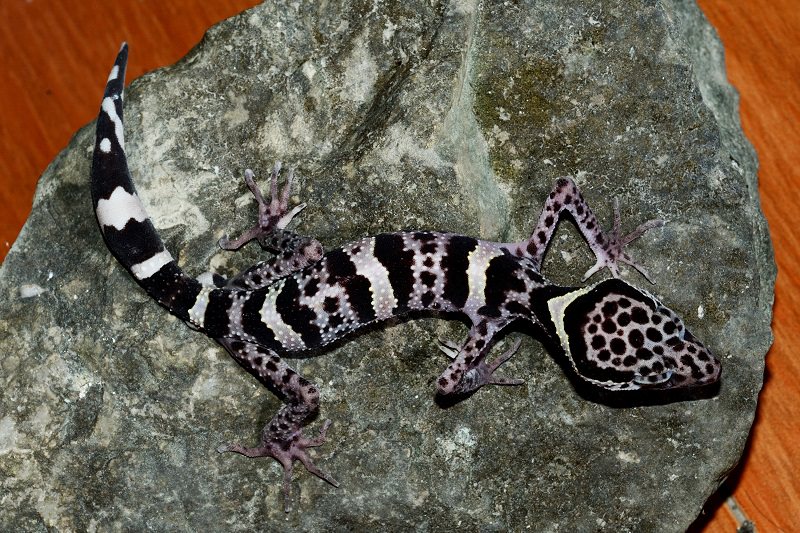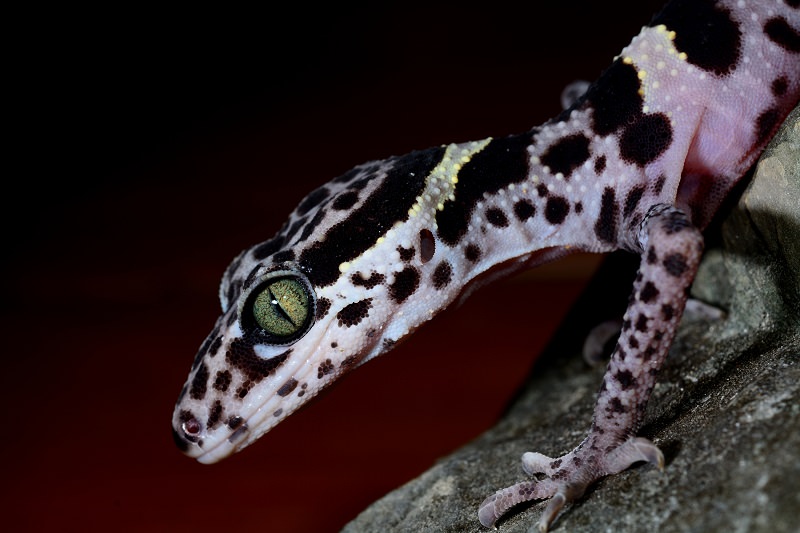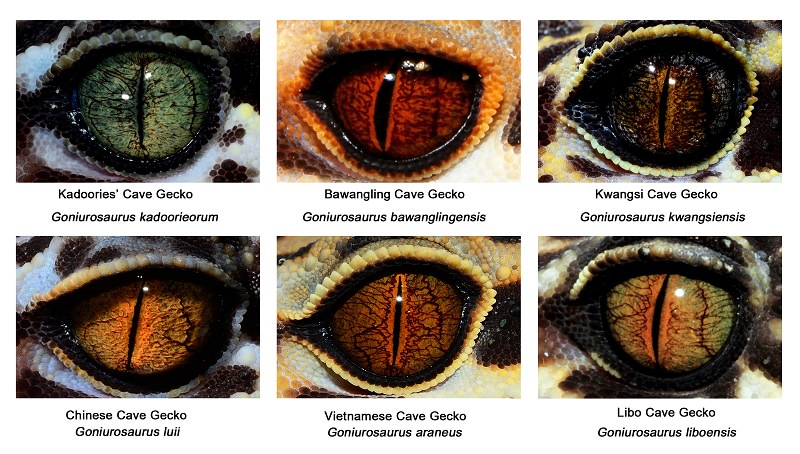A new species of Gecko with olive green eyes is named after the Kadoorie brothers


Fig. 1 & 2. The new species of gecko, Kadoories’ Cave Gecko (Goniurosaurus kadoorieorum)
A new species of large gecko, discovered by a team from Kadoorie Conservation China Department (KCC) in Guangxi last year, has been named after the Kadoorie brothers. The new species, from the genus Goniurosaurus (commonly referred to as Cave Geckos), has been named Goniurosaurus kadoorieorum (“Kadoories’ Cave Gecko”) after Sir Horace Kadoorie and Lord Lawrence Kadoorie, in celebration of their life-long support of biodiversity research and conservation in southern China. The Kadoories’ Cave Gecko’s distinguishing feature is a striking olive green iris; other geckos have brownish or reddish irises. The new species also has a different colour pattern on its body and number of scales. The KCC team also discovered another species of Cave Gecko, new to science, on the same trip to the Guangxi limestone forests, which has been named Goniurosaurus kwangsiensis. Cave Geckos occur throughout southern East Asia with a disjunct geographic distribution; they can be found in northeastern Vietnam, southern China including Hainan Island, and Japan’s Ryukyu Archipelago. With the two new species, the genus Goniurosaurus now has 17 members. China has the largest number of species with nine recorded so far.
 Fig. 3. The Kadoories’ Cave Gecko’s olive green eye is markedly different from the eyes of other Chinese cave geckos.
Fig. 3. The Kadoories’ Cave Gecko’s olive green eye is markedly different from the eyes of other Chinese cave geckos.

Fig. 4. Cave Geckos also have very different colourations and body patterns
Secret location
Almost all species of Cave Geckos have been popular as pets since the 1990s, Unfortunately new species are often the target of commercial collectors, and trade has driven many species to near extinction. To prevent this happening to our two new species – we are especially concerned that the unique green eye of the Kadoories’ Cave Gecko, will make it popular with collectors -- we did not disclose the locations of these restricted-range species. The scientific community supported us in this decision. Our two new species were described in a paper in the international journal ZOOTAXA in late June.

